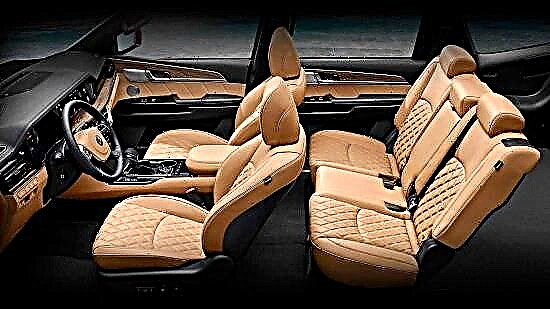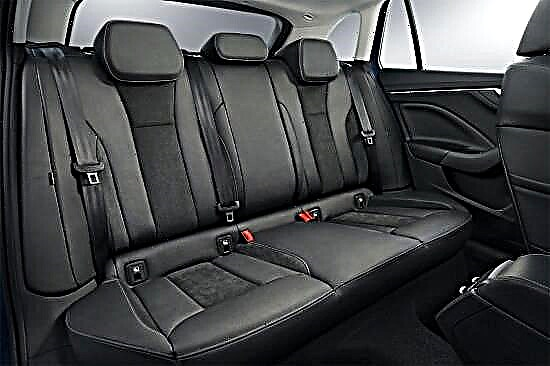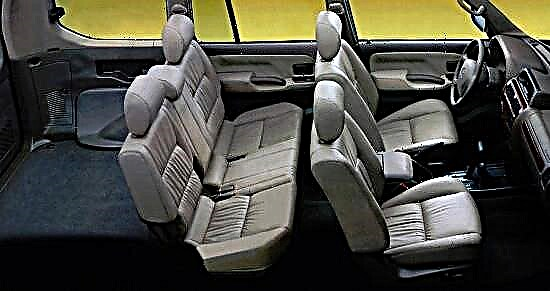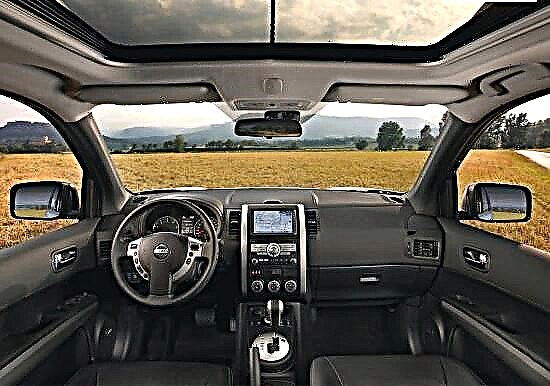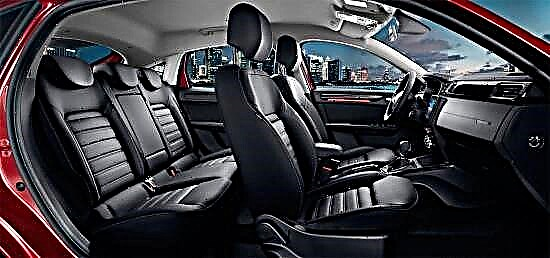Ratings of cars and auto products
Reviews, comparisons & tips for motorists
The ancient Chinese well understood the dual nature of our world - there are almost no unambiguous judgments, common values, and there is also no agreement in opinions. That is why both the time-tested crossover Skoda Yeti and its new competitor Opel Mokka have many fans who give their arguments in favor of buying this or that vehicle. We have to evaluate which car is better - Opel Mokka or Skoda Yeti. Or maybe they are too different to give them unambiguous assessments - like Yin and Yang in the philosophy of Tao, which, being opposite, cannot exist without each other.
Battle of the designers
Soft lines or strict strokes
The Opel Mokka crossover looks short and very tall, although it is actually longer and lower than the Skoda Yeti. The reason for this is the original design concept used by the Opel stylists - a strip of black plastic runs from the bottom of the car, encircling all sides of the car and visually raising it above the road. In addition, the line of windows in Mokka is raised very high, which also contributes to the visual increase in size. The short bonnet is reminiscent of the single-volume layout, and the almost vertical tailgate makes the Opel Mokka even more similar to the compact minivans that have become widespread in recent years.
From the front, the car may seem a little ridiculous - this is facilitated by the rounded lines of the hood and bumper, as well as huge arcs of black plastic that take away some of the space from the painted surface. But the headlights of the Opel Mokka, on the contrary, tune in a serious way with their two-level structure and sharp corners. The traditional Opel radiator grill with a wide chrome strip does not cause much fun, but the small ventilation holes between it and the lighting equipment give the front end some dynamism. At the back, the Opel Mokka resembles a full-fledged SUV with the sharp edges of the fifth door and its almost vertical position, but this picture is somewhat diluted by the imitation of the diffuser on the bumper painted in silver color. In a word, not a car, but a mixture of various design solutions - like a mocha coffee drink, to which, in addition to the main ingredient, milk and cocoa were added.
At first glance, in the choice of Yeti or Mokka, the Czech crossover definitely loses. But there is something in the appearance of the Skoda Yeti that makes you remember it even after a long time. After the update, the car lost the main controversial element in its appearance - round "glasses" of fog lights, because of which the main optics looked somewhat unfinished and even unprepossessing. Now, the design of the front of the vehicle from Skoda is dominated by strict geometric shapes and straight lines. Skoda Yeti's sharp-angled headlights look extremely serious, and a wide opening in the lower part of the bumper and a radiator grill with a large gap between the vertical slats even add aggressiveness to the car.
Unfortunately, the Skoda Yeti never got rid of the semblance of the Roomster minivan, which is especially noticeable if there are no roof rails on the roof of the car. When viewed from the side, the car does not resemble a crossover in any way - only the increased ground clearance and extended wheel arches that can accommodate rubber of considerable dimension speak of increased cross-country ability. The tailgate of the Skoda Yeti doesn't just appear vertical - it really is. But at the same time, the feeling of heaviness does not arise, since its surface contains beautiful kinks, complemented by compact lanterns with a laconic appearance. Having examined the Skoda Yeti from all sides, you understand what is so attractive in the appearance of a Czech car - harmony, which makes you perceive all design elements as one and indivisible.
Beauty or functionalism
If you look into both cars, then first you want to get into the Opel Mokka. Having penetrated inside through the driver's door and closed from the outside world, you immediately calm down and prepare for a long leisurely journey. The front panel of the Opel Mokka consists entirely of soft lines, like ovals - not only the visor of the instrument cluster, but also the center console, the bezel of the multimedia center screen, and even the side deflectors of the airflow system are made up of them. The latter are worth considering in more detail - in Mokka they protrude strongly outward, which at first irritates the eye, and then begins to like it due to the original look and ease of control. The most noteworthy in the Opel Mokka are the four dials located in front of the driver's eyes - the soft blue illumination used in them attracts attention even from a distance and gives the interior a soft elegance without compromising the speed of information reading.
Only small girls will be able to sit comfortably on the front seats of the Opel Mokka, thanks to which one can immediately judge the target audience of this car. The reason for this is the very narrowly set lateral support protrusions that squeeze a large person, forcing him to constantly rise, straining his back. There is no headroom in the Opel crossover either - tall people will always choose a half-recumbent position, which limits the space in the rear seats. I would also like to note the extreme inconvenience of controlling the manual transmission mode in the Opel Mokka. The switch button is located directly on top of the selector knob, which forces you to perform unusual movements for a motorist, causing associations more likely with the use of a computer "mouse" - although, perhaps, the target audience of the Opel Mokka crossover will just like it.
And there is not too much of it there - the high-positioned back of the sofa in the Opel Mokka forces you to choose an almost vertical seating position, in which tall people prop up the front seats with their knees. They tried to partially solve this problem by shortening the seat cushion, but Opel engineers managed to create more disadvantages than advantages, since during active maneuvering, passengers also grab the seat backs with their hands, trying their best to stay in place. There is a very serious complaint about the width of the Opel Mokka, due to the small value of which only two riders can fit here. The volume of the trunk of the Opel Mokka also cannot please, since even with fully transformed rear seats, it is 1.37 cubic meters, and in the minimum position it is completely equal to 356 liters.
When a comparison was made between Opel Mokka vs Skoda Yeti, it was immediately clear that the Czech car would show its best side. But this is mainly about the practicality, not the elegance of the interior decoration. The central console of the Skoda Yeti looks boring, but it is organized so correctly that after a while you begin to find the right buttons without even looking at them. Rectangular horizontal deflectors of the microclimate system also do not attract attention, but they do their job well, creating the necessary conditions for each of the riders. But the Skoda Yeti devices are no worse than those of the Opel Mokka - huge scales with deep blue backlighting are located in deep wells with chrome edging, and between them there is a small monitor on which secondary information is displayed.
The seats of the Skoda Yeti can be called one of the best in the class - they easily accept not only tall people, but also those who fit to take on a basketball.At the same time, they can be easily adjusted to individual needs thanks to a huge number of adjustments, including movement along vertical guides, typical for Skoda cars. The raised roof means you don't have to worry about free space, even on large road bumps that cause shocks and impacts.
In the back, the Skoda Yeti can accommodate three - and the only inconvenience for the average passenger is caused only by the high central tunnel through which the drive shaft passes. Otherwise, the Skoda Yeti offers the best of what compact crossovers can boast of - namely, the ability to move each of the three parts of the sofa separately from the others and adjust the backrest angle. Also, when choosing between the Mokka or the Yeti, don't forget about the great cargo and passenger options. Even with the seats pushed back as far as possible, providing ample legroom, the luggage compartment is 405 liters. If you fold the backrests of the Skoda Yeti seats, a compartment of 1.6 cubic meters is formed, devoid of a step on the floor.
Let's go on the road
Dynamic capabilities
The 1.8-liter engine installed on the Opel Mokka has long been known to us from Vectra cars - it has been on them for more than 10 years. However, here he has to cope with a considerable weight, as a result of which the car gives the impression of being sluggish and incapable of quick active maneuvers. At the same time, the lack of thrust of the Opel engine at low revs is acutely felt - if you maintain a constant low speed, the automatic transmission will quickly switch to higher gears, which is almost impossible to accelerate. Fortunately, the Opel Mokka gearbox is distinguished by excellent electronic settings, allowing you to quickly switch to lower gears. Unfortunately, this driving style leads to a rapid emptying of the fuel tank, which is empty in the city by more than 10 liters after overcoming 100 kilometers.
| Car model: | Opel Mokka | Skoda yeti |
| Producing country: | Germany (Build - Korea) | Czech Republic (Build - Russia) |
| Body type: | Crossover | Crossover |
| Number of places: | 5 | 5 |
| Number of doors: | 5 | 5 |
| Engine displacement, cubic meters cm: | 1796 | 1798 |
| Power, hp with. / about. min .: | 140/6200 | 160/6200 |
| Maximum speed, km / h: | 180 | 200 |
| Acceleration to 100 km / h, s: | 11,1 | 9,0 |
| Type of drive: | Full | Full |
| Checkpoint: | 6 automatic transmission | 7 automatic transmission |
| Fuel type: | Gasoline AI-95 | Gasoline AI-95 |
| Consumption per 100 km: | In the city 10.7 / Out of the city 6.3 | In the city 9.8 / Out of the city 6.6 |
| Length, mm: | 4278 | 4222 |
| Width, mm: | 1777 | 1793 |
| Height, mm: | 1658 | 1691 |
| Clearance, mm: | 180 | 180 |
| Tire size: | 205/70 R16 | 215/60 R16 |
| Curb weight, kg: | 1329 | 1370 |
| Full weight, kg: | 1919 | 1915 |
| Fuel tank volume: | 54 | 60 |
Against the background of the Skoda Yeti equipped with a turbocharged unit, the Opel Mokka looks like a real slow-moving. Even with an automatic transmission, the car reaches the first 100 kilometers per hour in just 9 seconds and continues to accelerate up to the second "hundred"! The robotic gearbox installed on the Skoda Yeti is ideally combined with a 1.8-liter power unit that develops a power of 180 horsepower. The ideal settings of the Skoda Yeti electronics allow you to distinguish between the smallest differences in the effort to press the gas pedal - if necessary, the car can smoothly roll along the highway, consuming no more than 6 liters / 100 km, and with a little effort created by the driver's right foot, it can accelerate sharply, bypassing several vehicles in the stream at once. It is worth saying that the days are long gone when robotic DSG transmissions, like the one that comes with the Skoda Yeti, were considered unreliable - now they are covered by a five-year warranty.
Comfort and cross-country ability
The chassis of the Opel Mokka is based on elements borrowed from the compact Chevrolet Aveo hatchback. At the same time, representatives of the Opel company tried to adapt them to a heavy crossover without significant changes, for which it was necessary to increase the rigidity of an already not very comfortable suspension. The result was a significant improvement in handling, as well as a complete elimination of roll, but the price was really terrible. The Opel Mokka crossover bounces even on the slightest cracks in the road surface, not to mention obstacles such as raised hatches and speed bumps. When, with the distance from the city center, the road begins to deteriorate greatly, you have to reduce the speed of movement, as there is always a feeling that the Opel Mokka will now take off the ground and go into free flight.
It is possible to produce a car off-road, but for this you need to remove from it the front bumper, equipped with a low-hanging strip of black unpainted plastic. The stuck ground clearance of the Opel Mokka is 180 mm, but under the plastic body kit it is reduced to only 165 mm, which corresponds to an ordinary passenger hatchback without claiming to be a crossover. But the rest of the car even surpasses expectations - it easily makes its way through mud and even deep enough snow. But the driver of the Opel Mokka would like to advise to constantly maintain the rpm of about 2500–3000 per minute, since at a higher value the car starts to skid violently, and at a lower value, the motor is frankly lacking in torque.
And again, in the comparison Mokka vs Yeti, the Czech crossover wins - the car is also quite tough, but this does not create the slightest discomfort. Compared to Opel, small jolts no longer seem annoying, but pleasant, indicating that you are really moving at a good speed. The steering wheel of the Skoda Yeti does not break out of your hands even with strong impacts, which allows you to keep a straight line well without the need to constantly adjust the direction of your movement. The rolls are minimal, and the instant shifts of the Skoda Yeti robotic gearbox do not allow longitudinal swing.
Skoda Yeti's cross-country ability is not to be occupied - largely due to the fact that the clearance rate of 180 mm is really measured from the lowest point of the vehicle. In addition, the Yeti is equipped with an advanced all-wheel drive transmission with electronic control, which allows you to react as quickly as possible to changes in the road situation, taking certain measures to stabilize the position. As a result, the Skoda Yeti can not only drive off the asphalt, but also participate in rallies that do not involve deep immersion in the mud. But you need to control the gas pedal carefully - if you press it strongly, Skoda may not understand your intentions and turn on a lower gear, as a result of which the car will get bogged down and you will have to look for a tractor in order to get out of the trap you created yourself.
Equal or opposite
We can immediately say that the Czech crossover Skoda Yeti is definitely ahead of its competitor in all respects. The Skoda car is much more dynamic with lower fuel consumption, has better roominess and ease of control, and also does not cause negative emotions when driving on roads with poor surface quality. Nevertheless, the Opel Mokka is selling quite well, despite its many shortcomings. The reason for this is the stylish appearance of Opel, which will especially appeal to the representatives of the beautiful half of humanity, as well as the price, which in a similar configuration will be about 300-400 thousand rubles less than that of the Skoda Yeti. So the concept of Yin and Yang, meaning unity and opposition in one, is relevant here too - both cars are similar in parameters, but they have different characters and are able to find their customers, albeit in different target audiences.

